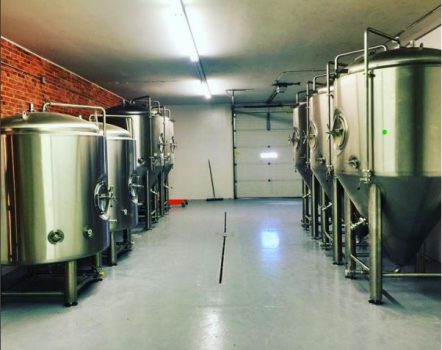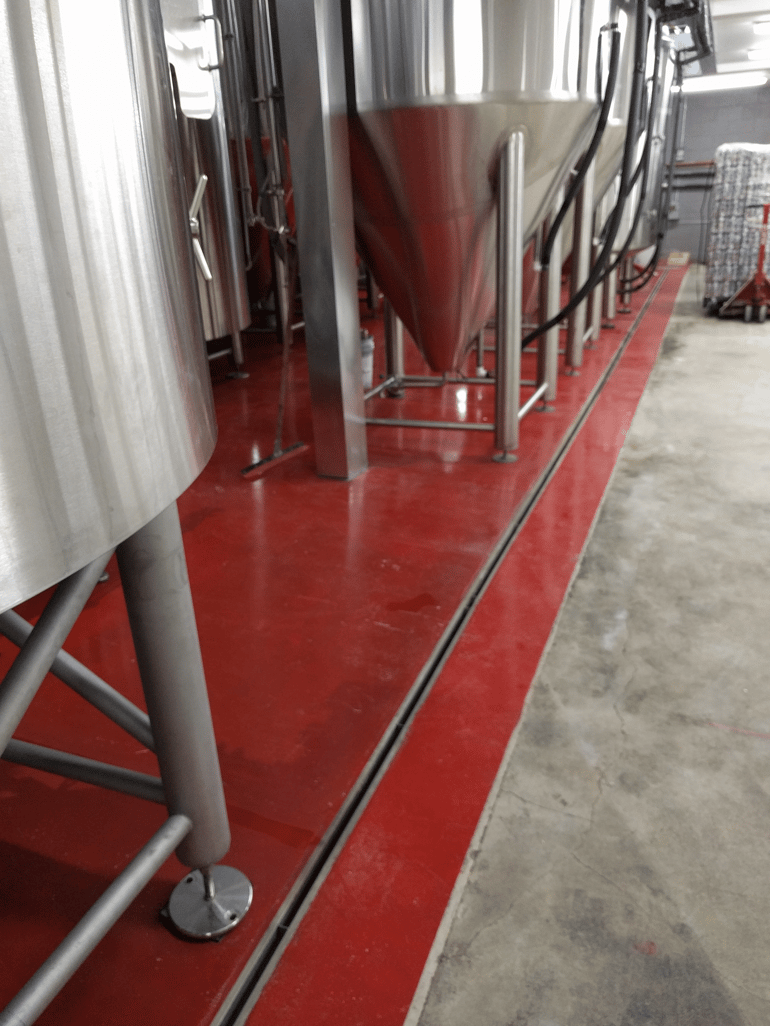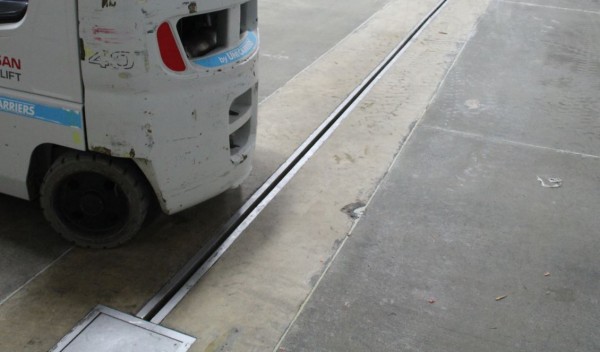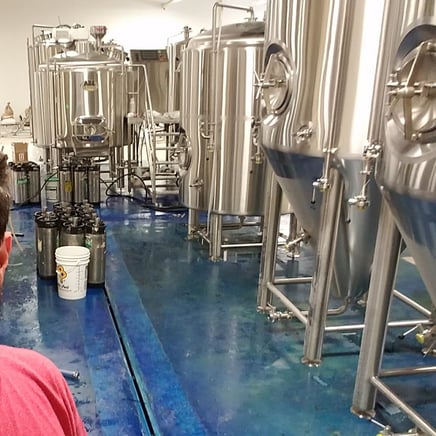Ex perienced brewers understand the long term cost savings associated with proper waste water management. Properly designed waste water collection reduces water usage, labor and maintenance.
perienced brewers understand the long term cost savings associated with proper waste water management. Properly designed waste water collection reduces water usage, labor and maintenance.
costs as well as utility expenses to run cleaning or pressurized equipment.
The Craft Brewers Association published a Waste Water Management Report showcasing that the average brewer uses 4.7 liters of waste water for every liter of beer produced. With unsophisticated brewers creating as much as as 7.8 liters of waste per beer liter. Regardless if you are very water conscious or oblivious to waste water creation the fact remains. Collecting and disseminating waste water is of the utmost importance in the brewery industry.
There are six areas that typically require a drainage solution in a brewery operation.

1. The Malt House
The first step in making beer is germinating the raw barley, wheat, oats, or rye in the malt house. Once the grain has finished germinating, it is then dried in a kiln and, in some cases, roasted in somewhere separate from the brewery itself. This process can leave particles floating around the room and covering the floor, and water is the best way to help rinse everything off. Having a drainage system in place will allow for the wastewater to drain from the surface, eliminating slipping and falling hazards.
2. The Brew Room
The malt is then moved to the brew room, where it is placed in kettles to begin the brewing process. This is one of the rooms most exposed to not only water but high temperatures as well. Naturally, this means the floors are likely to continuously have water and beer at various stages of the brewing process spilling all over it. So, not only do the floors have to be strong enough to withstand that sort of use, but there needs to be a drainage system to help manage all of the wastewater created during the whole brewing process.
3. The Fermentation Room
Next, is the fermentation process–one of the areas where equipment sanitation is absolutely vital. Like with the brew room, the fermentation room is exposed to large amounts of fermenting beer when it is first put in, and then when it is finally transferred to the next area. So, a drainage system will catch anything that does not make it into the fermenter.
4. The Bottling Area
One of the final steps is to bottle the finished product in the brewing area. Although this area is usually automated, mistakes can happen: machines can become backed up, bottles can creak, and, in general, the result is a big mess. Any wastewater that results during the bottling process needs a place to go, and that is where the drainage system comes into play.
5. The Warehouse
Finally, the bottled product is moved to the warehouse, where it waits to be taken to the tasting room or shipped to the various sellers. Here, just like with the bottling area, accidents can happen, and bottles can break, creating a mess that needs to be cleaned up and that then requires a drain to go to. Drains are especially critical here so that floors can dry faster, eliminating the chance of severe worker injuries.
6. The Tasting Room
Finally, there is the tasting room, where people come to have fun and try the different beers are tap. This area, too, can experience broken bottles, cups, spilled beer, and all sorts of messes. Beyond that, you want to keep it clean, and that means rinsing down and mopping the floor at the end of each day. So, having a drain in place is critical to help floors dry more quickly.
In each of these areas decisions must be made to either implement a stand alone floor drain or linear trench drain.

Choosing a System
Knowing that virtually every part of the brewery needs a suitable wastewater management system, the next part is knowing which drainage system to go with. There are many possibilities, but the most effective, easiest to install option is the Slot Drain System.
Slot Drain is a trench drain system that does not require a grate, making it a safer and ADA complaint drainage option. In addition, it offers a durable, high-quality food-grade stainless steel construction, with a load Class F rating, meaning it is capable of handling extremely heavy loads on top of it. Due to the unique pre-sloped design of the Slot Drain system, there is no need to worry about sloping floors in countless directions, allowing the water to flow smoothly.
Proper wastewater management is critical to the function of a brewery. Having a reliable wastewater system such as the Slot Drain drainage system can allow the brewery significantly reduce the amount of water they use during the brewing process. In addition, it can help lower the labor, maintenance, and utility expenses that are usually associated with running a brewery. That way, the brewery can do more, without having to spend exorbitant amounts of money.

Slot Drain Installed in Forklift-operated Facilities




